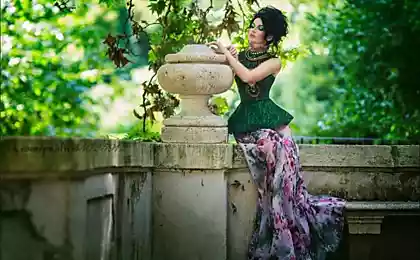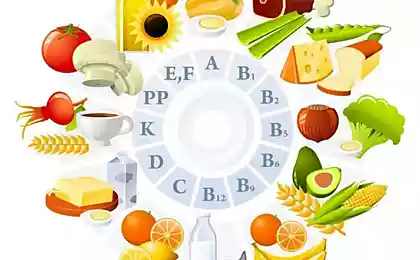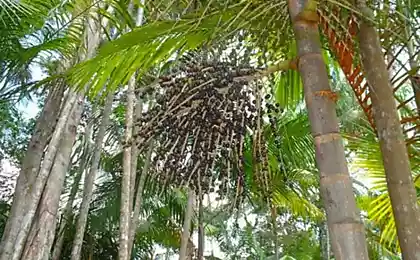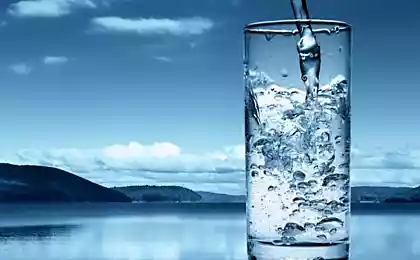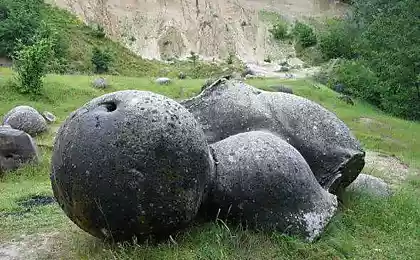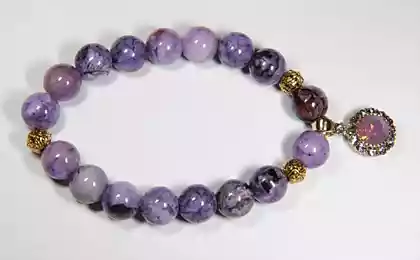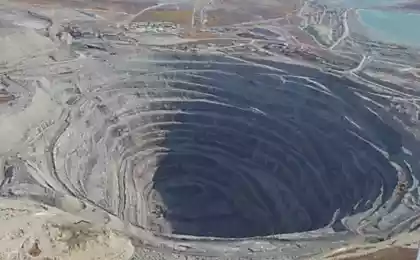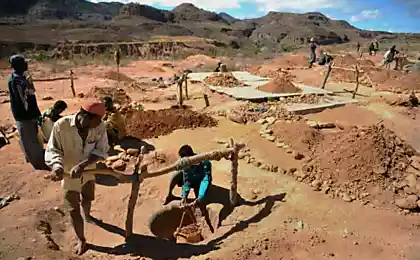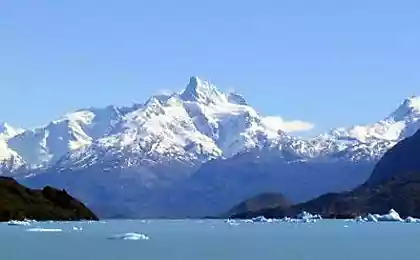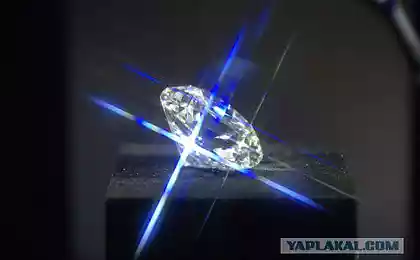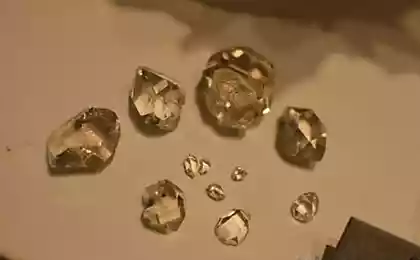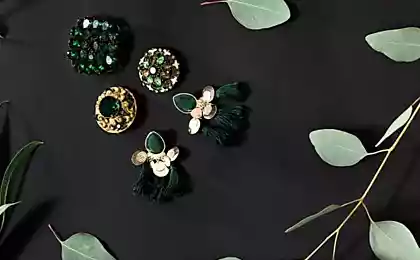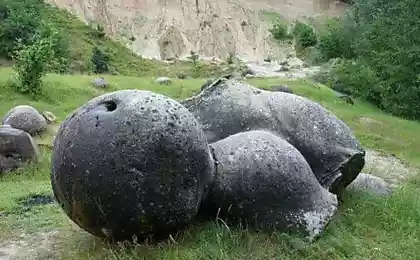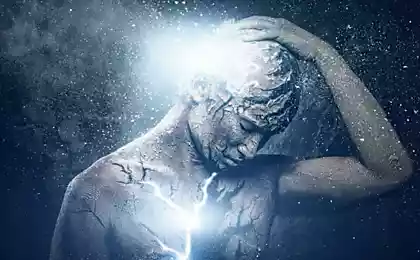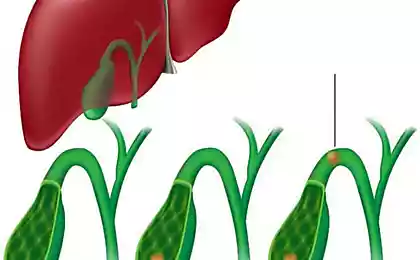1850
Interesting facts about minerals and gems
I have 15 years of collecting minerals, and for me this is not just a hobby, it's a state of mind. Once I wanted to get the Ural emerald, now in my collection there are diamonds, rubies, emeralds and even a meteorite olivine (about it later) Believe me, in the depths of the earth are hidden enormous wealth and incredible beauty, the same diamond before you got to the surface land, subsoil get with tens of thousands of years. I'll try to share with you the most interesting facts, and tell you about the process of production of the minerals themselves, their classification, types, features and much more. Let's start!
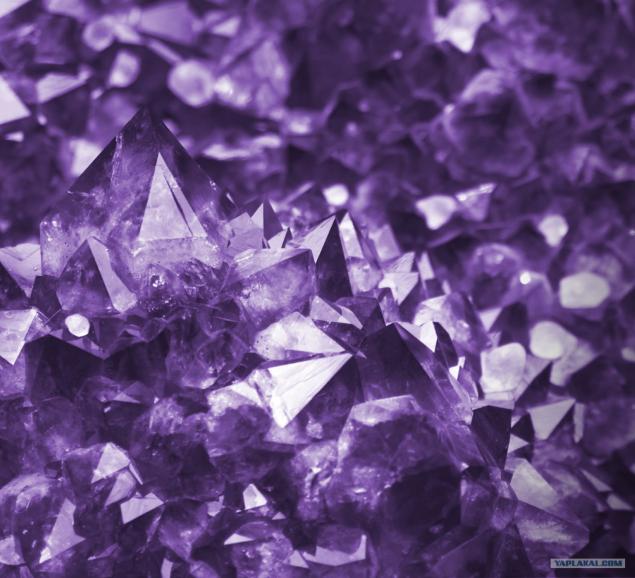
The most common mineral on earth - Quartz. Chemical formula of this mineral SiO2, Mohs hardness 6.8 - 7.4. The approximate ratio of the earth's crust - 80% has a variety of colors and varieties, for example: rock crystal, amethyst, citrine, rauchtopaz, Morion, Aventurine, as well as green, pink and white quartz. Quartz can be found everywhere, a lot of it in the sand, rocks and soil. In my opinion the most beautiful quartz is amethyst. They are found in geodes, and for example in the US is the valley amethyst, geode where you can find almost Digging ...
The photo citrine geode. They are usually a little burned out, thereby adding it to more saturated color, but does not define Greta Citrine is very simple, on the tip of the heated citrine always very deep orange hue.
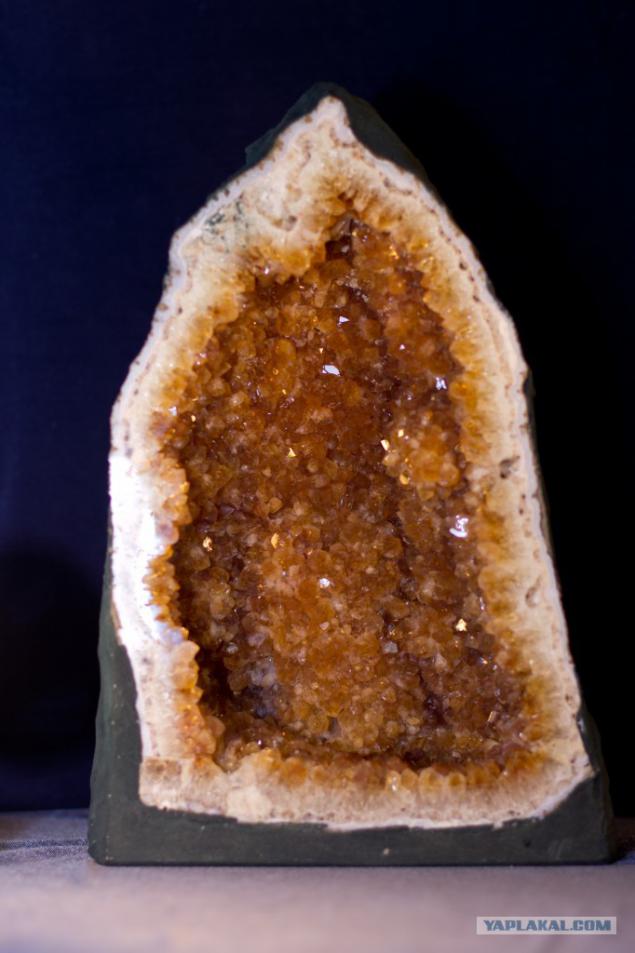
To proudly declare nuclear country, we do not always need to have a nuclear weapon, a little radiation is in every Russian, and even though I come from Ukraine, but I always thought that it was the Russians and the Ukrainians have such an unusual component. It is of course a joke. There is a mineral - Charoit. Joke about radiation and pride was not just. Charoite is lilac mineral fairly mild (5-5.5 Mohs) and what is most interesting is radioactive and the only deposit in the world is located in Russia, and more specifically in Yakutia. The composition of this mineral often includes strontium, aegerine, barium sulfide and a lot recently discovered pieces of a very rare mineral - tinaksita. In total, this mineral include more than 40 minerals and lilac give him manganese impurities. History of the discovery of this mineral is very interesting, in fact, this mineral is still just broken off all mineralogists Louvre. When Yuri Rogov opened mine purple mineral unknown to him, it seemed to him to tell about his nature can the French mineralogists, just at the time the Louvre claimed the largest and most comprehensive collection of minerals in the world. But what a surprise it was the museum mineralogists, when none of them have not been able to determine what is in front of them. Charoit mineralogy is the pride of Russia, and throughout the world is considered to be very valuable and expensive mineral. Cost per 10 cm plate reaches $ 100 or above, it is made of the most expensive and beautiful vases, figurines, ornaments, have the mineral collection is a great success. In my opinion this is one of the most beautiful minerals in the world. Unfortunately reserves of this mineral relentlessly emptied, and after a couple of decades, probably runs out. Here's a sad story. But put aside the lyrics, go ahead!
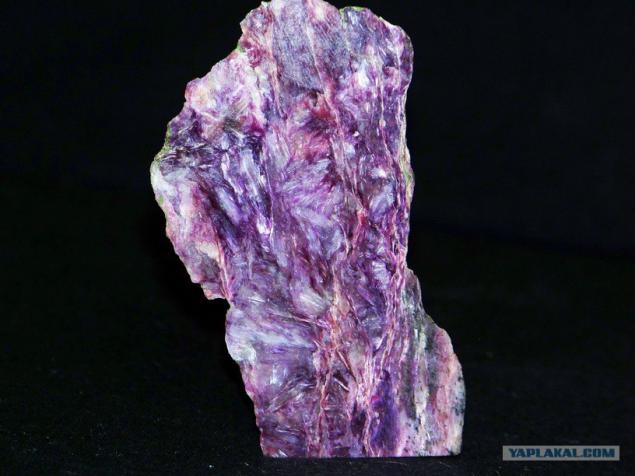
One of my favorite minerals it - Topaz. Topaz translated from Sanskrit means the lamp. This is a fairly common mineral has many shades, and growing small groups of crystals with many facets and often inclusions. Mineral enters the group of island silicates, and depending on the impurities having a corresponding color. In Ukraine, there is a city Volodarsk-Volyn, once it has been operating the mine for the extraction of beryl and topaz. It was there that extracted some of the most beautiful wine topaz in the world. Now the mines are flooded, and sometimes at shows sellers spread their old stocks and sell mined in the light of the USSR topaz. The most valuable are dark blue topaz, and the most common - colorless. At the Topaz is one not very nice feature, the stone does not like the sun, but rather light. Under the sunlight it discolored. So topaz found on the surface are almost always faintly, like a distant star light shade. Topaz ennoble often using radiation, after this procedure, they are becoming more intense and deep color. Topaz is a semi-precious stone, but in Russia was very appreciated, and was considered one of the most beautiful and expensive. Sometimes, very rarely find polychrome topaz. The photo polychrome topaz from Volodarsk-bagpipe.

Pomegranate - Latin translates to a similar grain. There are three groups of pomegranate. They differ in composition and color and different species. Familiar to us, and the most popular in the jewelry industry is pyrope garnet. He has an intense purple or dark shade of orange, and is considered a semi-precious stone. It is because of pyrope mineralogists often find deposits of diamonds (diamond pipes). The whole nature of pomegranate growing growths. In the US, there is a place called "Four Corners" singularity of this place is that ants living there for unknown reasons, no one is taken from the bowels of the earth small pieces of pomegranate, and make a kind of Chuchi right near an anthill. These granatiki have an unusual shape and size, all 4-9mm. Therefore, this is called the ant grenades. It is very much appreciated, because ants emit it to the surface is quite rare, and not too much. In composition, they are no different from the usual grenade, but as an exhibit are an incredible value.
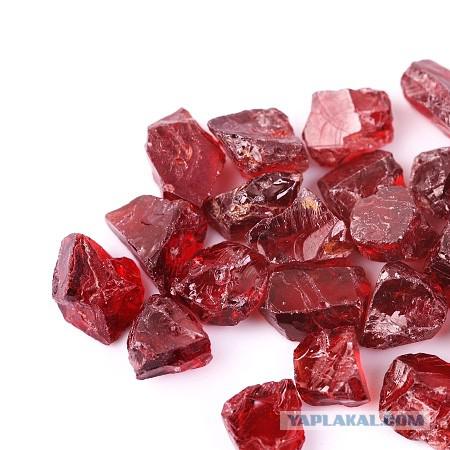
Emery
Not everyone knows that the ruby and sapphire in fact it too. The only difference is minor impurities that give a certain color corundum. Put simply, then: all red, deep red, and sometimes pink corundum anoint rubies, while the remaining (blue, yellow, pink, white, etc ..) sapphire. Aluminium oxide is one of the strongest on earth mineral that is known on the Mohs scale castle can reach 9.1 (for information, diamond has a fortress in 10 Mohs) Sapphires (mostly blue) is unfortunately the most counterfeited stone. The problem is that to synthesize a good sapphire is not difficult. Therefore, I address to all who want to buy and whether to ebee sapphire for $ 10 in a million carats, be sure to you a synthetic sapphire. This sapphire is very rarely saturated uniform color, in most cases it half by half colorless pale blue or another color shade. Corundum mined throughout the world, the main deposits are in India, Sri Lanka, Madagascar, etc ... Among all, there are Russian. Incidentally mined in Madagascar are very beautiful red sapphires. There is another interesting fact about the corundum: found in nature as an invited stellate corundum. There are extremely rare, so rare that the number of copies of the size of a chicken egg can be counted on the fingers. feature is like a star shining surface. Who wants to find a video on the Internet. Sapphires and rubies can cost more than diamonds of equal weight.

Beryls.
Aquamarine is the blue variety of beryl, emerald - green. There are also white, yellow and red the rarest beryl (Bixby). The hardness of the stone ranges from 7.5 to 8 Mohs, but in spite of this stone is quite fragile. Emerald as other beryl (except aquamarine) 99.9% have inclusions. Almost always this stone covered with small cracks and chipped. Such is the nature of the stone. The best emeralds are mined in Colombia, and in Russia, the Urals (Sverdlovsk region Malyshev mine) Now I know there is not emeralds mined, at least not in the volumes ... The average for the extraction of 1 carat emerald is necessary to process 15 20 tons of rock. Emeralds mined in Africa. Emerald Sapphire is considered on a par with the most famous of ancient stones, and often is more valuable diamonds with equal weight. Bixby is red emerald or as they say bloody. Very rare and expensive mineral that is mined only in the US state of Utah. Basically it has a collection value. Aquamarine is the blue, sometimes slightly greenish mineral, has both jewelry and collector's value, especially appreciated the transparent, elongated crystals. Very often in the soldering with granite. In Volodarsk Volynskyy found aquamarines weighing tens of kilograms. The photo Bixby.
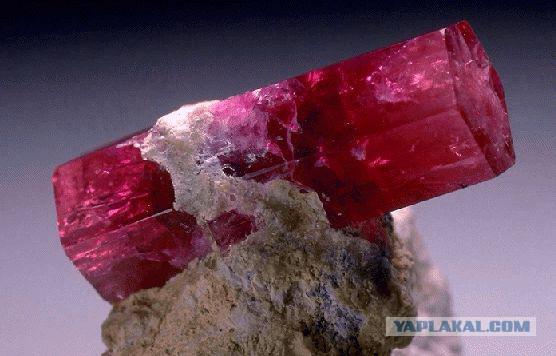
Diamond
Diamond is known to the strongest known to man, and all minerals substances, although similar to the crystalline lattice of graphite. Mohs hardness equal to 10. So you know the percentage of diamonds that fall in the jewelry industry about 10-7%, the rest is boring, all sorts of tools, etc ... It is a mistake to believe that only colorless diamonds are. In fact, the most common diamond color is yellow. Then, there are blue, pink, green, blue and even fluorescent. This is not a joke, it is fluorescent. Diamond is a semiconductor. Diamond prices are very diverse. Those who think they can buy a $ 100 color diamond, no, - it is impossible. Even ennobled radiation colored diamonds come at a cost of $ 10 dollars per carat yew. I will not talk about cleanliness, etc ... does not make sense, everything is very individual for each pebble. The optical properties of diamond are manifested very dramatically, the game world is so fond of girls Viagra manifested by the high refractive index and dispersion. Simply put the diamond passes through itself all the light and reflect it to the brink of maximum efficiency. Essentially trap is obtained when the light is concentrated at one point and then reflected. Therefore, no it's not magic, just one section of the light density is much higher)
If you think that the diamond is no alternative, then you are greatly mistaken, not so long ago was synthesized artificial mineral with virtually identical to diamond properties (castle Mohs 9.5, the play of light the human eye is almost indistinguishable from perfectly pure diamond) mineral called Moissanite, and is an ideal fake, so often when buying supposedly diamond ring, you can just shove it, so check back later specialist :)
Mined diamonds in kimberlite pipes, they are similar in appearance except that carrot. On 1 tonne of mined rock about 1.1.5 carats.
In the photo with the diamond cut Eppler
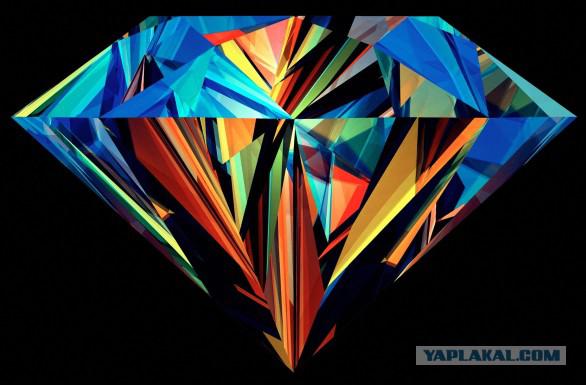
Alexandrite
He blazed spring morning and in the evening the smell of wine. It's about alexandrite stone property which changes its color depending on the lighting, usually when the cold light becomes green, and in the heat (light Ilyich) red or purple with violet flavor. Named in honor of the 16 year-old Alexander, and then the king Alexander II. Stone won the hearts of many of its mysterious and unusual properties to transform. The first stone was found in 1833 and adopted as an emerald, but confused his strength and forced herself to study in more detail. The name he gave Leo Petrovsky. Stone has been handed as a gift to the then young Alexander. Alexandria - a variety of chrysoberyl. Mineral very strong (8.5 Mohs) and rarely transparent. It is generally in the form of ores, sometimes drusen. Prices of mineral bite, at the time I did not dare to give a tidy sum for a small, translucent not faceted, and a pea-sized stone, then I offered 3 thousand MNT) Until recently, the only place where the extracted alexandrite was the same Malyshevskoye emerald kingdom. Alexandrite successfully synthesized on ebee they littered the entire section)

Olivine in meteorites
Not everyone knows that in meteorites sometimes come olivine crystals. Olivine is a fairly common mineral on earth, but when it comes to something unearthly ... In this case, when cutting large chunks of the meteorite, you can get to the inclusions of olivine crystals. To a large extent, they are yellow or orange, semi-transparent, and very beautiful. It's not just beautiful, it is breathtaking :)
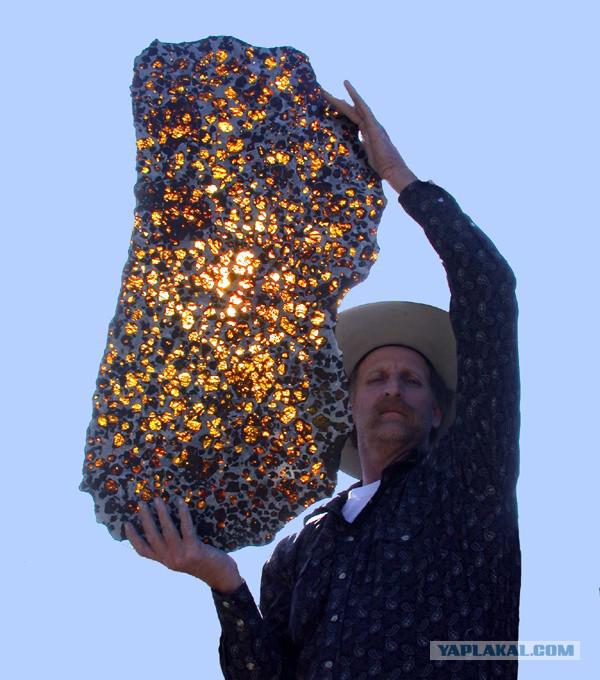
Source:

The most common mineral on earth - Quartz. Chemical formula of this mineral SiO2, Mohs hardness 6.8 - 7.4. The approximate ratio of the earth's crust - 80% has a variety of colors and varieties, for example: rock crystal, amethyst, citrine, rauchtopaz, Morion, Aventurine, as well as green, pink and white quartz. Quartz can be found everywhere, a lot of it in the sand, rocks and soil. In my opinion the most beautiful quartz is amethyst. They are found in geodes, and for example in the US is the valley amethyst, geode where you can find almost Digging ...
The photo citrine geode. They are usually a little burned out, thereby adding it to more saturated color, but does not define Greta Citrine is very simple, on the tip of the heated citrine always very deep orange hue.

To proudly declare nuclear country, we do not always need to have a nuclear weapon, a little radiation is in every Russian, and even though I come from Ukraine, but I always thought that it was the Russians and the Ukrainians have such an unusual component. It is of course a joke. There is a mineral - Charoit. Joke about radiation and pride was not just. Charoite is lilac mineral fairly mild (5-5.5 Mohs) and what is most interesting is radioactive and the only deposit in the world is located in Russia, and more specifically in Yakutia. The composition of this mineral often includes strontium, aegerine, barium sulfide and a lot recently discovered pieces of a very rare mineral - tinaksita. In total, this mineral include more than 40 minerals and lilac give him manganese impurities. History of the discovery of this mineral is very interesting, in fact, this mineral is still just broken off all mineralogists Louvre. When Yuri Rogov opened mine purple mineral unknown to him, it seemed to him to tell about his nature can the French mineralogists, just at the time the Louvre claimed the largest and most comprehensive collection of minerals in the world. But what a surprise it was the museum mineralogists, when none of them have not been able to determine what is in front of them. Charoit mineralogy is the pride of Russia, and throughout the world is considered to be very valuable and expensive mineral. Cost per 10 cm plate reaches $ 100 or above, it is made of the most expensive and beautiful vases, figurines, ornaments, have the mineral collection is a great success. In my opinion this is one of the most beautiful minerals in the world. Unfortunately reserves of this mineral relentlessly emptied, and after a couple of decades, probably runs out. Here's a sad story. But put aside the lyrics, go ahead!

One of my favorite minerals it - Topaz. Topaz translated from Sanskrit means the lamp. This is a fairly common mineral has many shades, and growing small groups of crystals with many facets and often inclusions. Mineral enters the group of island silicates, and depending on the impurities having a corresponding color. In Ukraine, there is a city Volodarsk-Volyn, once it has been operating the mine for the extraction of beryl and topaz. It was there that extracted some of the most beautiful wine topaz in the world. Now the mines are flooded, and sometimes at shows sellers spread their old stocks and sell mined in the light of the USSR topaz. The most valuable are dark blue topaz, and the most common - colorless. At the Topaz is one not very nice feature, the stone does not like the sun, but rather light. Under the sunlight it discolored. So topaz found on the surface are almost always faintly, like a distant star light shade. Topaz ennoble often using radiation, after this procedure, they are becoming more intense and deep color. Topaz is a semi-precious stone, but in Russia was very appreciated, and was considered one of the most beautiful and expensive. Sometimes, very rarely find polychrome topaz. The photo polychrome topaz from Volodarsk-bagpipe.

Pomegranate - Latin translates to a similar grain. There are three groups of pomegranate. They differ in composition and color and different species. Familiar to us, and the most popular in the jewelry industry is pyrope garnet. He has an intense purple or dark shade of orange, and is considered a semi-precious stone. It is because of pyrope mineralogists often find deposits of diamonds (diamond pipes). The whole nature of pomegranate growing growths. In the US, there is a place called "Four Corners" singularity of this place is that ants living there for unknown reasons, no one is taken from the bowels of the earth small pieces of pomegranate, and make a kind of Chuchi right near an anthill. These granatiki have an unusual shape and size, all 4-9mm. Therefore, this is called the ant grenades. It is very much appreciated, because ants emit it to the surface is quite rare, and not too much. In composition, they are no different from the usual grenade, but as an exhibit are an incredible value.

Emery
Not everyone knows that the ruby and sapphire in fact it too. The only difference is minor impurities that give a certain color corundum. Put simply, then: all red, deep red, and sometimes pink corundum anoint rubies, while the remaining (blue, yellow, pink, white, etc ..) sapphire. Aluminium oxide is one of the strongest on earth mineral that is known on the Mohs scale castle can reach 9.1 (for information, diamond has a fortress in 10 Mohs) Sapphires (mostly blue) is unfortunately the most counterfeited stone. The problem is that to synthesize a good sapphire is not difficult. Therefore, I address to all who want to buy and whether to ebee sapphire for $ 10 in a million carats, be sure to you a synthetic sapphire. This sapphire is very rarely saturated uniform color, in most cases it half by half colorless pale blue or another color shade. Corundum mined throughout the world, the main deposits are in India, Sri Lanka, Madagascar, etc ... Among all, there are Russian. Incidentally mined in Madagascar are very beautiful red sapphires. There is another interesting fact about the corundum: found in nature as an invited stellate corundum. There are extremely rare, so rare that the number of copies of the size of a chicken egg can be counted on the fingers. feature is like a star shining surface. Who wants to find a video on the Internet. Sapphires and rubies can cost more than diamonds of equal weight.

Beryls.
Aquamarine is the blue variety of beryl, emerald - green. There are also white, yellow and red the rarest beryl (Bixby). The hardness of the stone ranges from 7.5 to 8 Mohs, but in spite of this stone is quite fragile. Emerald as other beryl (except aquamarine) 99.9% have inclusions. Almost always this stone covered with small cracks and chipped. Such is the nature of the stone. The best emeralds are mined in Colombia, and in Russia, the Urals (Sverdlovsk region Malyshev mine) Now I know there is not emeralds mined, at least not in the volumes ... The average for the extraction of 1 carat emerald is necessary to process 15 20 tons of rock. Emeralds mined in Africa. Emerald Sapphire is considered on a par with the most famous of ancient stones, and often is more valuable diamonds with equal weight. Bixby is red emerald or as they say bloody. Very rare and expensive mineral that is mined only in the US state of Utah. Basically it has a collection value. Aquamarine is the blue, sometimes slightly greenish mineral, has both jewelry and collector's value, especially appreciated the transparent, elongated crystals. Very often in the soldering with granite. In Volodarsk Volynskyy found aquamarines weighing tens of kilograms. The photo Bixby.

Diamond
Diamond is known to the strongest known to man, and all minerals substances, although similar to the crystalline lattice of graphite. Mohs hardness equal to 10. So you know the percentage of diamonds that fall in the jewelry industry about 10-7%, the rest is boring, all sorts of tools, etc ... It is a mistake to believe that only colorless diamonds are. In fact, the most common diamond color is yellow. Then, there are blue, pink, green, blue and even fluorescent. This is not a joke, it is fluorescent. Diamond is a semiconductor. Diamond prices are very diverse. Those who think they can buy a $ 100 color diamond, no, - it is impossible. Even ennobled radiation colored diamonds come at a cost of $ 10 dollars per carat yew. I will not talk about cleanliness, etc ... does not make sense, everything is very individual for each pebble. The optical properties of diamond are manifested very dramatically, the game world is so fond of girls Viagra manifested by the high refractive index and dispersion. Simply put the diamond passes through itself all the light and reflect it to the brink of maximum efficiency. Essentially trap is obtained when the light is concentrated at one point and then reflected. Therefore, no it's not magic, just one section of the light density is much higher)
If you think that the diamond is no alternative, then you are greatly mistaken, not so long ago was synthesized artificial mineral with virtually identical to diamond properties (castle Mohs 9.5, the play of light the human eye is almost indistinguishable from perfectly pure diamond) mineral called Moissanite, and is an ideal fake, so often when buying supposedly diamond ring, you can just shove it, so check back later specialist :)
Mined diamonds in kimberlite pipes, they are similar in appearance except that carrot. On 1 tonne of mined rock about 1.1.5 carats.
In the photo with the diamond cut Eppler

Alexandrite
He blazed spring morning and in the evening the smell of wine. It's about alexandrite stone property which changes its color depending on the lighting, usually when the cold light becomes green, and in the heat (light Ilyich) red or purple with violet flavor. Named in honor of the 16 year-old Alexander, and then the king Alexander II. Stone won the hearts of many of its mysterious and unusual properties to transform. The first stone was found in 1833 and adopted as an emerald, but confused his strength and forced herself to study in more detail. The name he gave Leo Petrovsky. Stone has been handed as a gift to the then young Alexander. Alexandria - a variety of chrysoberyl. Mineral very strong (8.5 Mohs) and rarely transparent. It is generally in the form of ores, sometimes drusen. Prices of mineral bite, at the time I did not dare to give a tidy sum for a small, translucent not faceted, and a pea-sized stone, then I offered 3 thousand MNT) Until recently, the only place where the extracted alexandrite was the same Malyshevskoye emerald kingdom. Alexandrite successfully synthesized on ebee they littered the entire section)

Olivine in meteorites
Not everyone knows that in meteorites sometimes come olivine crystals. Olivine is a fairly common mineral on earth, but when it comes to something unearthly ... In this case, when cutting large chunks of the meteorite, you can get to the inclusions of olivine crystals. To a large extent, they are yellow or orange, semi-transparent, and very beautiful. It's not just beautiful, it is breathtaking :)

Source:
